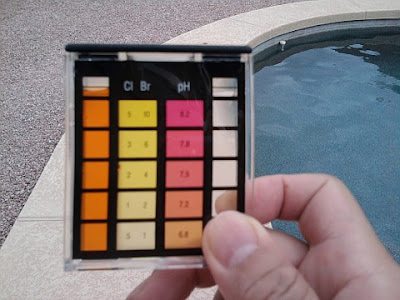I have been having problem with algae growth in my pool. Over a period of 2-3weeks I have been putting 10lbs of shock 2lbs at a time. The algae has almost all gone away.
They look like this. Seems to radiate from the auto cleaning nozzles.
I use test strips and every month I have Leslie test the water. I finally decide to get the hth 6way tester at Walmart.
The results I got was this.
CYA=60-70
PH=7.8
Alkaline=100
Now for Total Chlorine the color was redish. Like this.
Does that mean it is off the scale ? Must be because of the 10lbs of shock.
I also have 2 types of test strip and they show Free Chlorine to be at least 10.
-
fAs for the hardness it must be also above the scale as I could not get it to change color. I stop after about 40 drops (or 400ppm). Last test by Leslie a month ago was 400.
I am confuse as I still see some new algae growth this morning despite such high Free Chlorine ? For the past several days I am only running the chlorinator for new chlorine. Am I doing something wrong ?
Thanks for any help.












 Reply With Quote
Reply With Quote

Bookmarks